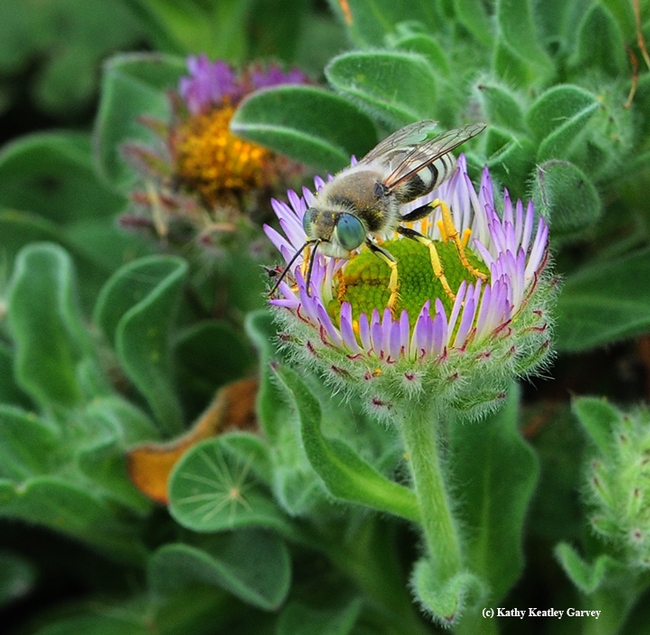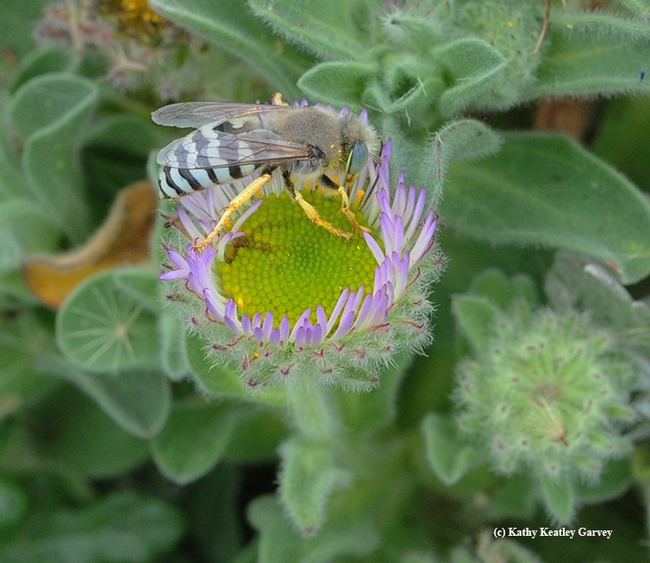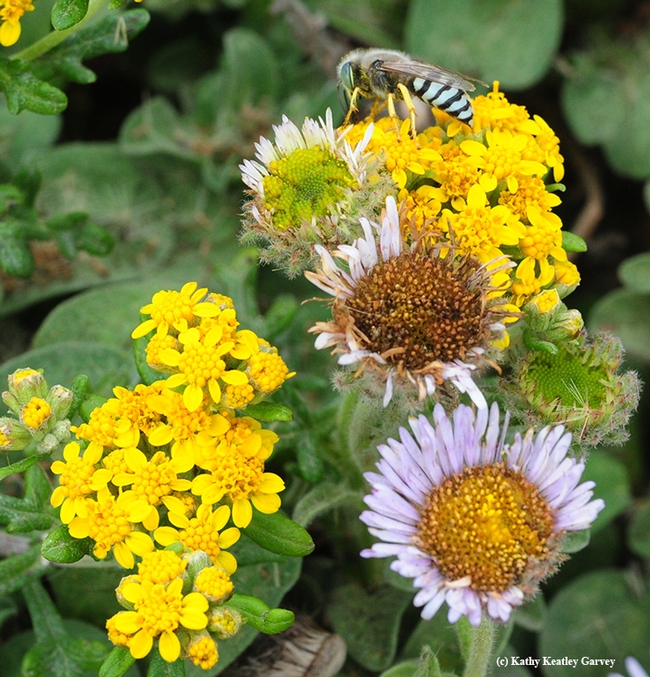If you're walking along the cliffs of Bodega Head, Sonoma County, you may overlook them.
While you're watching for whales, scouting for seabirds and checking out the hikers, there's a lot of movement in the seaside daises (Erigeron glaucus) and seaside woolly sunflower (Eriophyllum staechadifolium).
Green-eyed bullets with spectacular abdominal stripes zero in on the flowers, grab some food (this really is "fast food") and then take off at break-neck speed.
They're sand wasps, Bembix americana, so named because they dig nest holes in the sand. They belong to the family Crabronidae, subfamily Bembicinae, tribe Bembicini (sand wasps), subtribe Bembicina, and genus Bembix. They're quite common in North America. We've seen them from Fort Bragg to Bodega.
They're not vegetarians, like our honey bees. Like all wasps, they're carnivores. They're hunters. They're predators. They prey upon small insects, such as flies. The sand wasps then carry their prey back to their nests.
So while you're watching for whales, watch the flowers. If they move, it may be more than just the wind.
Want to read more about sand wasps? Entomologist Richard Bohart (for whom the Bohart Museum of Entomology at UC Davis, is named), and his former graduate student, Arnold Menke, wrote about them in their book, "Sphecid Wasps of the World," published in 1976 by the University of California Press, Berkeley.
Attached Images:

Sand wasp, Bembix americana, foraging on a seaside daisy on Bodega Head, Sonoma County. (Photo by Kathy Keatley Garvey)

Side view of sand wasp, Sand wasp, Bembix americana, foraging on a seaside daisy on Bodega Head, Sonoma County. (Photo by Kathy Keatley Garvey)

Sand wasp foraging for food on the seaside woolly sunflower, also nicknamed lizard tail and seaside golden yarrow. Its botanical name is Eriophyllum staechadifolium. (Photo by Kathy Keatley Garvey)